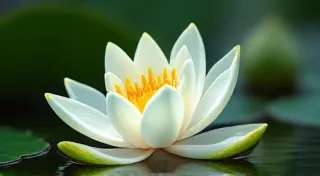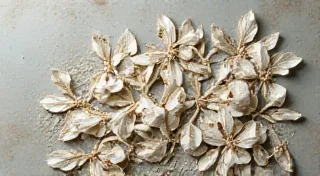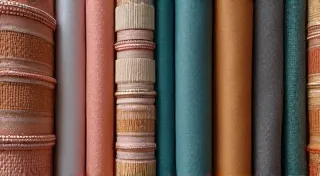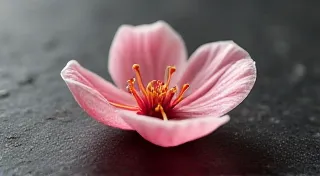The History and Craft of Kumihimo Braiding
Welcome to a journey into the captivating world of Kumihimo braiding, a traditional Japanese textile art form that transcends mere cord making. More than just beautiful strands, Kumihimo embodies a rich history, intricate Japanese braiding techniques, and a profound cultural significance that has resonated for centuries. This website is dedicated to exploring every facet of this mesmerizing craft – from its earliest origins to its modern applications – offering insights for both seasoned textile artists and curious beginners. Join us as we unravel the secrets woven into each twist and turn.
For those unfamiliar, Kumihimo essentially translates to "gathered threads," a deceptively simple name for a process that gives birth to incredibly complex and aesthetically pleasing cords. But to truly understand Kumihimo, we must delve deeper than the basic definition. It’s a craft intimately linked to the historical narrative of Japan, deeply embedded within the social fabric, and imbued with philosophical underpinnings. It’s a living tradition, constantly evolving while remaining profoundly connected to its roots, and a prime example of exquisite traditional textile art.
A Glimpse into Kumihimo's Past
The origins of Kumihimo are shrouded in some mystery, though evidence suggests it’s been practiced in Japan for at least 1,300 years. Initially, these cords weren't merely decorative. As we explore in Beyond Adornment: The Functional Heart of Kumihimo, their initial purpose was intensely practical. They were used for samurai armor, weapon hilts, religious fittings, and a host of other vital applications. Think of the incredible pressure placed on these braids - they literally held lives together. This wasn’t simply a craft; it was an essential skill.
During the Edo period, Kumihimo’s role began to shift. While it retained its functionality, its artistry blossomed. The exquisite palettes achieved during this era are brought to life in Chromatic Echoes: Unlocking the Palette of Edo-Era Kumihimo. The artisans of the time honed their Japanese braiding techniques to create stunning designs, and Kumihimo became a symbol of status and refinement, something that’s further examined in The Loom's Whisper: Analyzing the Social Status of Kumihimo Artisans.
The spread of Kumihimo wasn’t limited to Japan. As we see in The Cord's Cartography: Mapping the Geographic Spread of Kumihimo, it traveled along trade routes and through cultural exchanges, adapting and evolving as it encountered new materials and influences. This evolution is evident in the variety of braiding patterns that emerged across different regions.
The Mathematics of Beauty
What many find truly astonishing about Kumihimo is the elegant mathematics that underpins its creation. While the visual result can appear organic and flowing, the process relies on precise calculations and geometric principles. For those interested in the underlying structure, Beyond the Pattern: Discovering the Hidden Mathematics of Kumihimo delves into the fascinating intersection of art and mathematics that defines the craft. It’s not just about aesthetics; it's about understanding the ratios and proportions that create balance and harmony.
The techniques themselves are surprisingly accessible. While mastering complex braiding patterns requires dedication and practice, the foundational principles are readily understandable. Understanding the nuances of different styles is essential to any Kumihimo enthusiast. This is where The Language of Twists: Decoding the Nuances of Kumihimo Styles comes into play, dissecting the subtle variations that distinguish one style from another.
Want to learn the basics? We offer a range of cord making tutorials to guide you through the process, from simple braids to more intricate designs. [Link to tutorial section/page - Placeholder]. Learning these fundamental steps unlocks a world of possibilities for your own creative projects.
The Resilience of Tradition
Like all traditions, Kumihimo has faced periods of decline and revival. The process of reconstructing lost techniques is fascinating, and documented in Fragments of Memory: Reconstructing Lost Kumihimo Techniques. It’s a testament to the dedication of artisans who are committed to preserving this vital part of their cultural heritage.
The ability of Kumihimo to adapt and endure is remarkable. The craft’s “shadow of innovation,” as examined in The Shadow of Innovation: Kumihimo's Adaptations Across Centuries, showcases its ability to incorporate new materials, techniques, and design aesthetics while remaining true to its core principles. This adaptability is key to its continued relevance.
The act of weaving, of intertwining threads, inherently speaks to themes of interconnectedness. The “silent dialogue,” as explored in The Silent Dialogue: Kumihimo and the Harmony of Opposites, demonstrates how seemingly contrasting elements – strength and fragility, rigidity and fluidity – can coexist in perfect balance within a single Kumihimo braid.
Stories Woven In
Kumihimo isn't just about creating beautiful objects; it's about storytelling. The craft has been used to communicate narratives, express emotions, and preserve cultural memories. The Cord as Narrative: Kumihimo and the Art of Storytelling delves into the ways in which Kumihimo has been used to tell stories, both overt and subtle. Each twist and turn can hold a deeper meaning, waiting to be deciphered.
And of course, throughout history, Kumihimo designs have reflected the beliefs and anxieties of the time. Unraveling the Myths: Kumihimo and Folklore of the Textile Realm reveals the intriguing folklore surrounding this art form, revealing the symbolic meanings embedded within certain braiding patterns and motifs. These aren't simply patterns; they are echoes of ancient beliefs.
Even the materials used can evoke powerful imagery. Whispers in Silk: The Kumihimo of Forgotten Emperors explores the role of silk, a luxurious material, and its significance in representing imperial power and status throughout Japanese history.
The Fragility and Power
There’s a poignant beauty in the inherent fragility of Kumihimo. Despite its strength and functionality, the delicate nature of the threads underscores the ephemeral nature of life and the importance of cherishing the present moment. This concept of “ephemeral strength” is thoughtfully examined in Ephemeral Strength: The Fragility and Power of Kumihimo.
The act of weaving can also be a meditative practice, guiding you through various Japanese braiding techniques. The repetitive motions promote focus and a sense of calm. We encourage you to explore the therapeutic benefits of this ancient craft.
The craft also offers a unique perspective on the perception of time. In The Loom of Time: Kumihimo and the Perception of Linearity, we consider how the process of weaving can alter our understanding of time, creating a sense of continuity and flow. The repetitive motions can create a meditative state, allowing us to transcend the constraints of linear time.
Finally, Kumihimo provides a powerful lens through which to examine cultural transmission. A Legacy in Strands: Kumihimo's Transmission Through Generations celebrates the artisans who have kept this tradition alive, passing down their skills and knowledge, including traditional textile art and specific cord making tutorials, from one generation to the next. The continuity of this tradition is a testament to the enduring power of human creativity.
We hope you enjoy exploring the fascinating world of Kumihimo braiding. Whether you're a seasoned artisan or a curious beginner, there's something here for everyone.
Explore the functional heart of Kumihimo, unravel the hidden mathematics, delve into the cultural significance, and discover the beauty and resilience of this extraordinary art form.
[Link to tutorial section/page - Placeholder] - Find detailed cord making tutorials to get started!


















